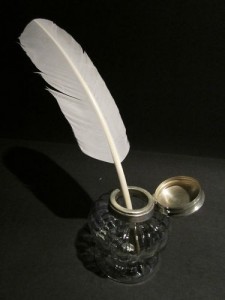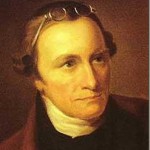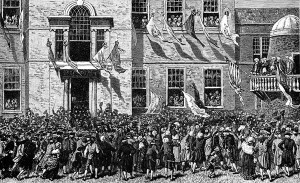 The celebration of American Independence Day on the Fourth of July has come to include parades, barbecues and fireworks. The celebrations should include discussions of how the Declaration of Independence came to be. In Part One. The Committee of Five appointed to draft a declaration of independence had dwindled in reality to just Thomas Jefferson and John Adams. In Part Two, Jefferson and Adams agree to the declaration’s form. Part Three explores Jefferson’s state of mind following his meeting with Adams, with Jefferson wishing he were in Virginia. In Part Four, Jefferson’s selection to draft the declaration takes place. In Part Five, Jefferson considers the lessons of history as he begins work on the Declaration. In Part Six, Jefferson finds his mission: to express the American Mind and give definition to distinctly American principles of governance. In this Final Part Seven, Jefferson begins to write.
The celebration of American Independence Day on the Fourth of July has come to include parades, barbecues and fireworks. The celebrations should include discussions of how the Declaration of Independence came to be. In Part One. The Committee of Five appointed to draft a declaration of independence had dwindled in reality to just Thomas Jefferson and John Adams. In Part Two, Jefferson and Adams agree to the declaration’s form. Part Three explores Jefferson’s state of mind following his meeting with Adams, with Jefferson wishing he were in Virginia. In Part Four, Jefferson’s selection to draft the declaration takes place. In Part Five, Jefferson considers the lessons of history as he begins work on the Declaration. In Part Six, Jefferson finds his mission: to express the American Mind and give definition to distinctly American principles of governance. In this Final Part Seven, Jefferson begins to write.
The Second Continental Congress was scheduled to open its Friday, June 14, 1776 session at 10 AM. While Thomas Jefferson was expected to attend he would not. He had spent a restless night his mind contemplating the task that had fallen to him.
It was exactly one week since his fellow Virginian, Richard Henry Lee had officially proposed a resolution for American independence to the Congress and for varied reasons, and Jefferson’s role in this historic drama now loomed large. Jefferson thought back on the events of the last few days.
On June 11th, Ben Franklin nominated Jefferson as the Virginian to be on a committee to draw up a declaration in to explain independence to England, the world, the Continental Army and the American people. The committee needed a Virginian, as it was Virginia’s resolution, and Lee had had to leave Philadelphia to tend to his sick wife.
On June 12th, Franklin’s nomination became an appointment and that evening Jefferson headed to City Tavern expecting a meeting of the Declaration Committee of John Adams, Franklin, Roger Sherman and Roger Livingston and himself. The meeting turned into just Jefferson and Adams. It seemed that few thought the declaration to be terribly important. Over dinner, he and Adams, agreed to a fairly simple form for the declaration:
- A preamble or “whereas” statement explaining the purpose of the document
- A statement of law/philosophy that states the basis for the proposed action
- A list of grievances against the king
- Prior actions taken in response to the king’s acts.
- Apply the law/philosophy to the actions to arrive at the conclusion that independence is the appropriate remedy to the grievances.
On the 13th, Jefferson was “assigned” by Adams to draft the declaration to justify independence. His first order of business was to consider what was needed to effectively fill in the outline he had arrived at with Adams. This involved lessons from history and sharpening his sense of the thinking of the American people. It was almost time to start writing.
The International Audience for the Declaration of Independence
Jefferson reviewed his notes from the day before. It was clear that for the foreign audience he had to weave in the abuses of the king and how those abuses had resulted in the king giving up any legitimate claim to govern the colonies. These points were crucial if there were any hope of assistance from the French or Spanish. This was language they would understand, and then not be taking sides in the internal affairs of the British Empire.
Reading the Mind of The American Audience
The American audience was more complex and included not only the political leaders, but farmers, shopkeepers, General Washington’s army and potential recruits, but over the last 16 years a consensus had built among the Americans, and came to be what Jefferson referred to as the “American Mind”. The declaration’s job for the American audience was not to convince the people of the justness of independence, but rather to confirm for them what they believed. He had made notes last night on the evolution and current state of the American Mind as well.
Looking at his notes on American public statements, essays and writings from James Otis to John Dickinson and his own Summary View of the Rights of British America he discerned a common themes. One commonality was a view of natural rights that envisioned rights that belonged to all and extending well beyond the “rights of Englishmen”. A further common theme for American public acts and statements on government was the existence of a “right of revolution”. The last feature of most American writings on British government in the colonies was the inclusion of a deferential and respectful reference to the king.
James Otis had made respectful references to the king in his Vindication as had Dickinson in his Farmer letters. Otis included this show of royal respect even while he complained of British Rule, thus outwardly keeping his complaints from sounding like treason. From 1760 to this day, nearly all public statements about British mistreatment of the colonists included a kind word for “his majesty”. This may have been from caution because the punishment for treason could include beheading. Perhaps a few complimented the king because of sincere hopes to reconcile with the mother country.
The American Mind Becomes a Mind of Its Own
 There were recent departures from a continued reverence for the king. Patrick Henry made clear he had no hopes of reconciliation in 1774 when he called King George a tyrant and invited the king’s assassination. Thomas Paine’s Common Sense not only had no kind words for George, he declared no king had a right to rule. The American Mind had been preparing to discard royal deference and publicly express its grievances against the king personally, and it appeared the preparation was now complete.
There were recent departures from a continued reverence for the king. Patrick Henry made clear he had no hopes of reconciliation in 1774 when he called King George a tyrant and invited the king’s assassination. Thomas Paine’s Common Sense not only had no kind words for George, he declared no king had a right to rule. The American Mind had been preparing to discard royal deference and publicly express its grievances against the king personally, and it appeared the preparation was now complete.
The American Mind had passed the last hurdle to become a mind completely of its own, unlike any in history and exceptional.
How to Begin?
 Jefferson’s job was now to find the words to convey the common sense of the matter to the world and the American people. He grabbed his goose quill and dipped it in the ink.
Jefferson’s job was now to find the words to convey the common sense of the matter to the world and the American people. He grabbed his goose quill and dipped it in the ink.
The lawyer in Jefferson took over. This was to be a legal document. Legal documents had a form and structure. Such documents typically began with a “WHEREAS….” Jefferson anticipated that this declaration would be read aloud at public gatherings. “Whereas” had a conspicuously royal tone to it, particularly when read aloud in public. Americans were announcing a revolution against a king. Using a word like “whereas” that had the sound of an order from a monarch would set a poor tone. Jefferson needed to open without using “whereas”.
Since the goal was to reflect the American common sense on the justness of independence, the first phrase must set the tone that what was to follow was obvious. After mentally playing with words, and saying them aloud it struck him.
Jefferson considered for a moment that he was going to be joining Richard Henry Lee and John Adams as a candidate for hanging, burning and mutilation and beheading. He placed the inked quill upon the parchment…
“When in the course of human events…”
With that auspicious beginning Jefferson would go on to pen an immortal document, The Declaration of Independence, which placed the legal legitimacy of the United States upon “…the law of Nature and of Nature’s God…” and express the American Creed as Jefferson understood the American Mind with these 55 words:
“We hold these truths to be self-evident, that all men are created equal, that they are endowed by their Creator with certain unalienable Rights, that among these are Life, Liberty and the pursuit of Happiness.–That to secure these rights, Governments are instituted among Men, deriving their just powers from the consent of the governed…”
This series has become the basis for the Book: Creating the Declaration of Independence . Available on Amazon in print and Kindle editions.






[…] The final installment of this series is: Birthing of the Declaration of Independence: Part Seven, Quill is Set to Parchment […]